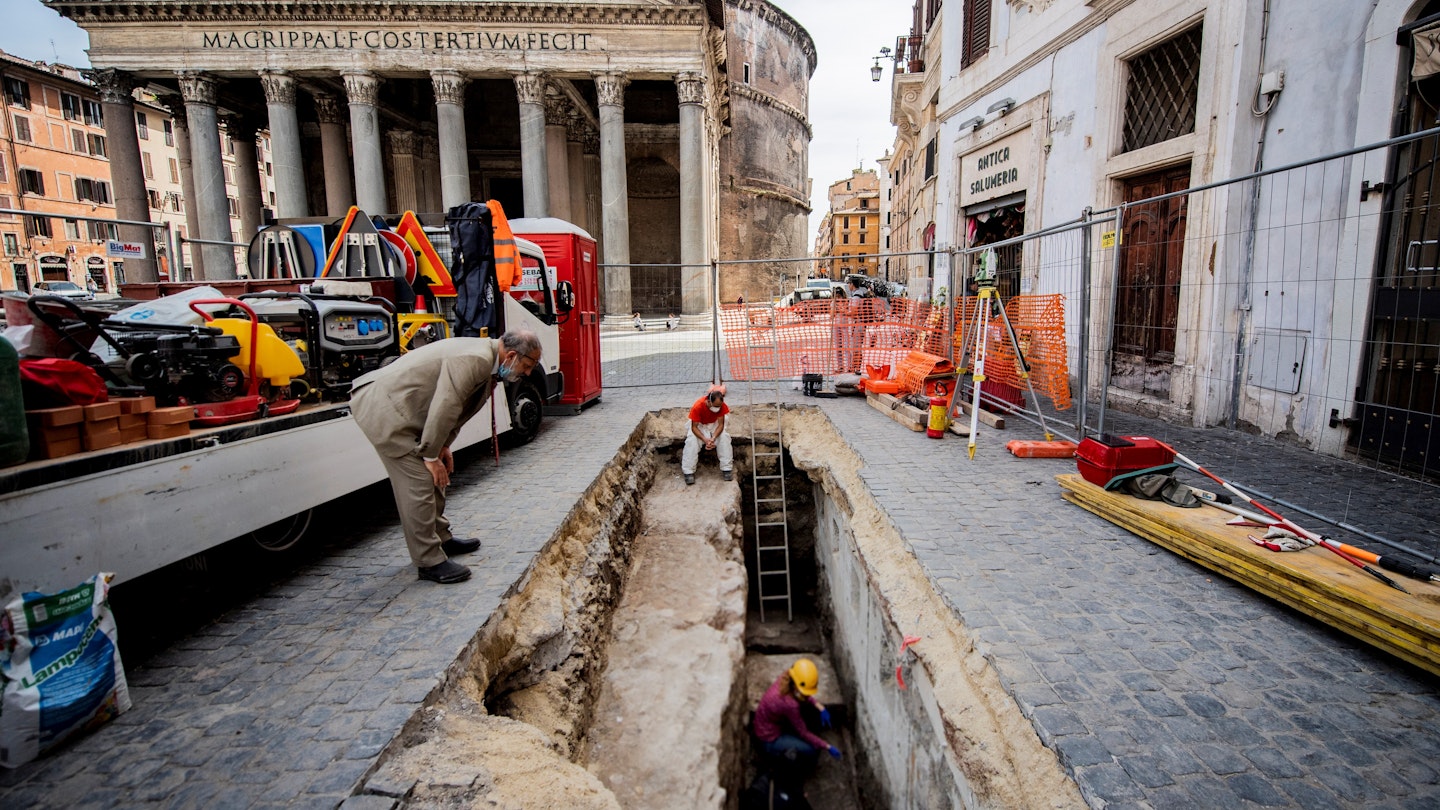Archaeological Discoveries at Rome’s Pantheon
A sinkhole has opened up at Piazza della Rotonda in front of the iconic Pantheon in Rome, exposing an ancient pavement that has captured the attention of historians and archaeologists alike.
According to Agenzia Nazionale Stampa Associata (ANSA), archaeological investigations conducted following the sinkhole’s occurrence indicate that the imperial Roman pavestones discovered date back between 27 and 25 B.C. The excavation team unearthed seven slabs of travertine, a type of sedimentary rock used in ancient construction.
This area, however, is not new to archaeological scrutiny. The first exploration occurred in the 1990s, where scientific studies aimed to reconstruct the larger dimensions of the square in front of the Pantheon. Experts suggest that this site underwent a significant renovation in the 2nd century AD, led by Emperor Hadrian, who elevated and repaved the square.

“After more than twenty years from their first discovery, the slabs of the ancient pavement of the square in front of the Pantheon emerge intact, protected by a layer of fine pozzolan. This discovery demonstrates how crucial archaeological protection is—not only as a tool for knowledge but also essential for preserving the testimonies of our history, particularly in a historic city like Rome,” stated Special Superintendent Daniela Porro.
The sinkhole measures nearly ten square feet and extends over eight feet deep. The emergence of sinkholes has become a recurring issue in Rome, likely due to underground cavities and the city’s soft sandy soil.
One positive aspect of the COVID-19 situation is that the area had limited foot traffic during the incident, leading to no reported injuries.
As lockdowns ease globally, the world is beginning to adapt to a new normal. It is important to remain informed about ongoing changes in travel due to the pandemic, keeping safety as a priority regarding archaeological sites.




